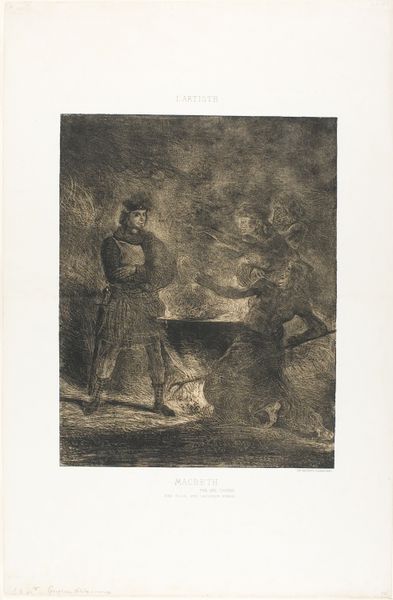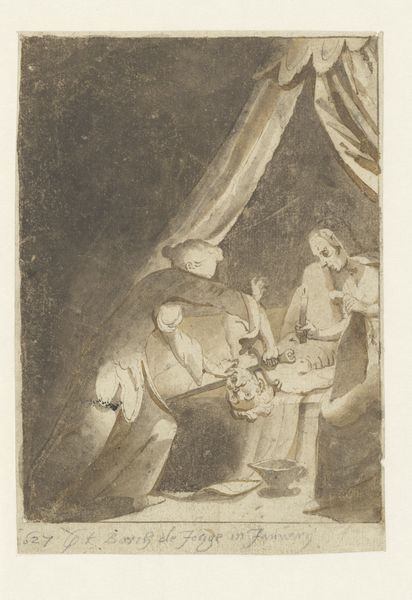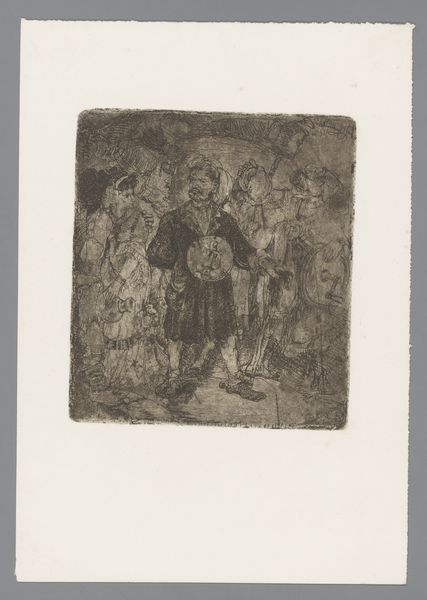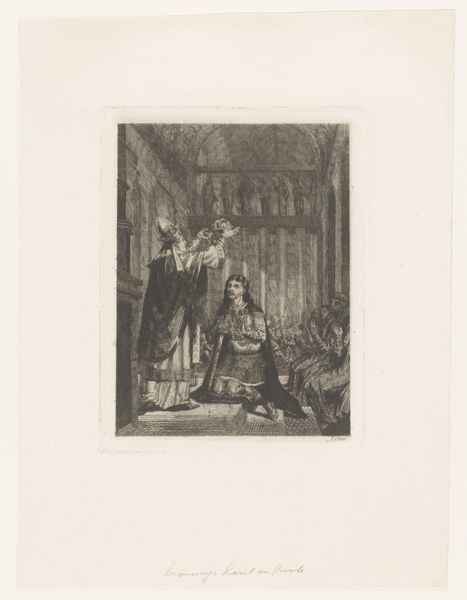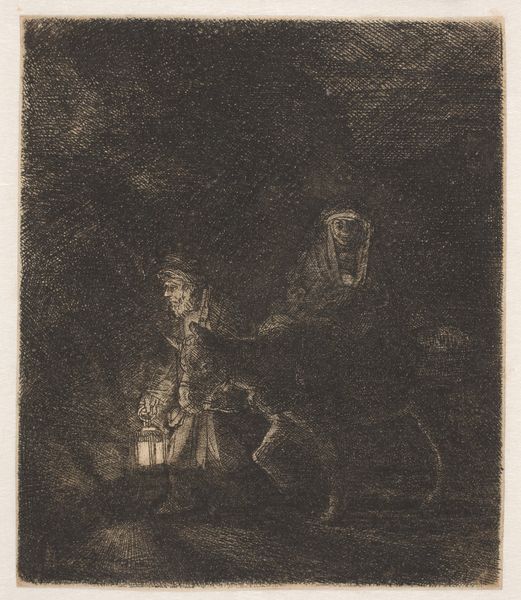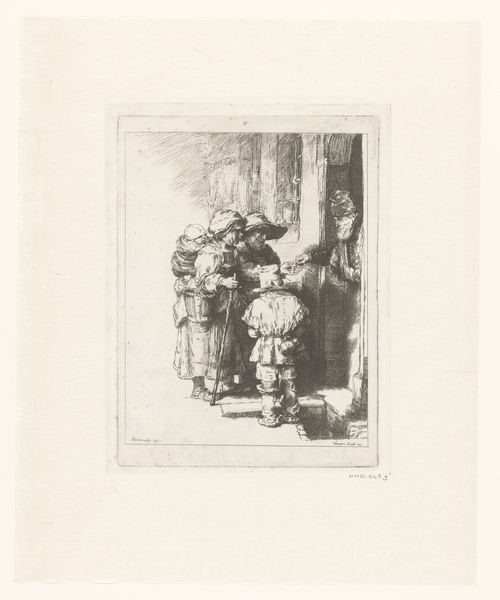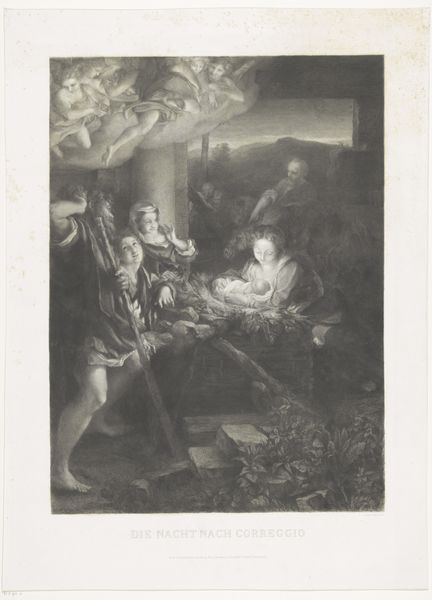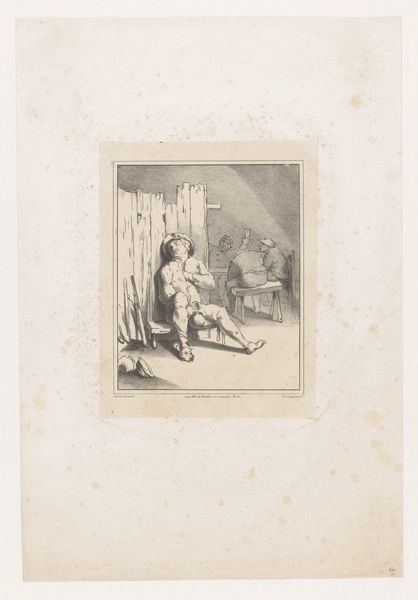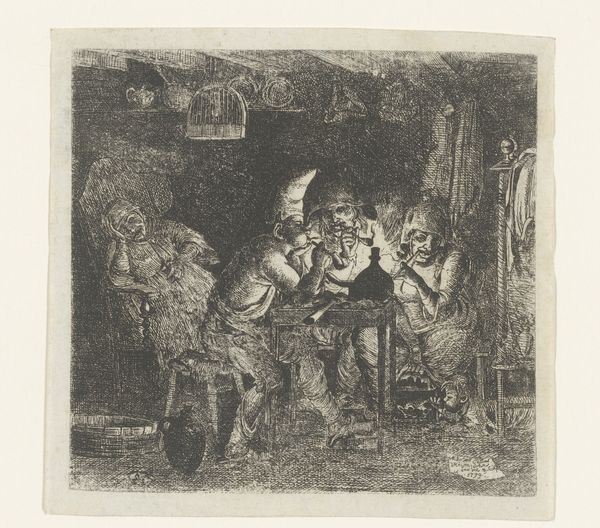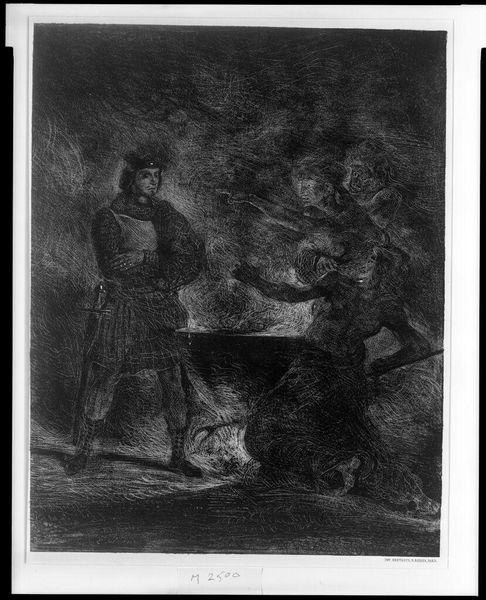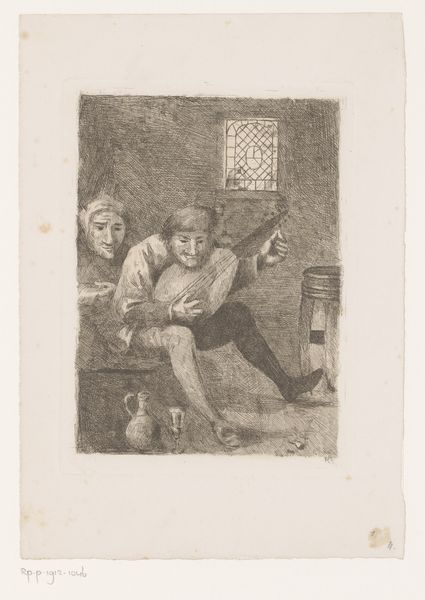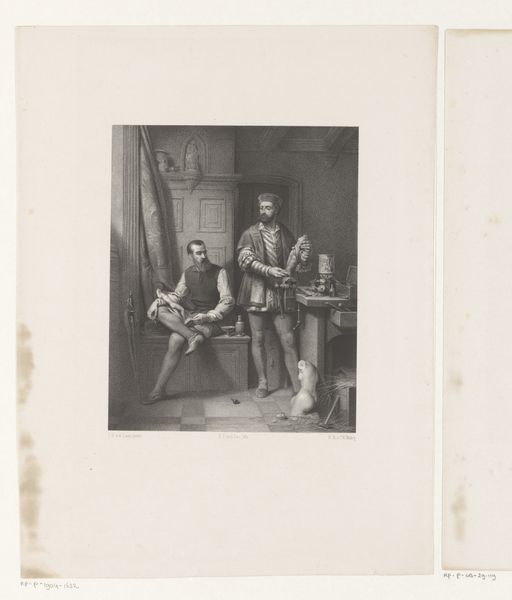
print, engraving
#
narrative-art
# print
#
figuration
#
romanticism
#
line
#
history-painting
#
engraving
Copyright: Public domain
Curator: This is Eugène Delacroix’s “Macbeth and the Witches,” an engraving from 1825, now residing at the Musée national Eugène Delacroix in Paris. Editor: My initial thought is, wow, this print conveys such a palpable sense of foreboding! The figures seem almost consumed by the murky atmosphere. What sort of labor went into the printing of these plates? Curator: Delacroix explored the darker narratives of Romanticism. He produced a series of lithographs based on Shakespeare’s Macbeth, aligning with the period's fascination for the dramatic and macabre, it reflected societal anxieties present at that time. Editor: An engraving—imagine the labor, carving that image into metal! You see that contrasted texture, which is indicative of craft, how that really dictates the mood. This image feels both powerful and unsettling. The manipulation of the materials themselves adds to its force. It makes you think about craft production beyond "art" as such, too. Curator: Absolutely. It reveals an intellectual engagement. The visual vocabulary references earlier art historical tropes associated with the demonic. He wanted to evoke fear and awe within a cultural landscape already grappling with enormous social and political upheaval after the Napoleonic era. Editor: Yes, exactly! It reminds me of the prints made around the time of the Revolution. Curator: So, do you find that the medium itself enhances or perhaps even challenges our reading of Shakespeare's original narrative? Editor: Challenges, I think. You understand Delacroix has gone away from just documenting or illustrating, into full blown translation by method. A powerful choice. Curator: That choice amplified certain dramatic undertones for 19th-century audiences already conditioned to see the theatre as a space for socio-political critique, especially under Restoration policies that sought to reign it in. Editor: And isn't that so evocative to remember, the actual work—that it's also the social situation within which people engage this as an object, a site, and all the implications this might carry! It makes this such a deeply compelling piece! Curator: Agreed. A tangible artifact charged with not just artistic brilliance but also layers of socio-political tension of a particular period in European history.
Comments
No comments
Be the first to comment and join the conversation on the ultimate creative platform.
